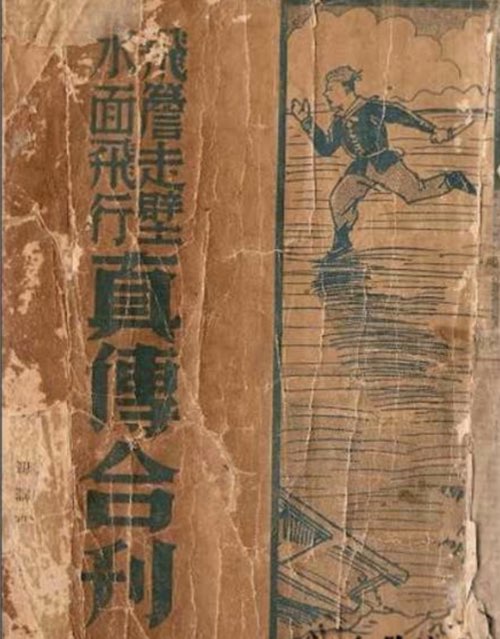Feiyanzoubi 飛簷走壁 or ‘flying eaves running walls’ is a classic skill set of the stealth operative. The skill was independently recorded by Bai Yansheng 白燕生 in his book Authentic Techniques of Weightless Leaps on Roofs, Walls, and Water 飛簷走壁水上飛行真傳合刊, published in China, 1926. The following is an extract:
1/ Treading on the roof tops: A rule of thumb is to tip-toe along the Yin Yang tiles, that is, treading with the front of the foot between the concave and convex part of the tiles. This enables the prowler to secure solid footing.
2/ Hanging down from the roof: A person on top of the roof may hear, but not see, what is going on down below, which makes descent unfeasible. In this case, the technique of “white dragon hanging upside down” may be used. This means tipping forward until the body hangs down [over the roof eaves] with the front of the instep, or the tip of the toes, gripping the concave part of the tiles. This position allows a clear view of the interior of the house. Should vision be obstructed by the window paper, perforate the paper with the tip of the [wet] tongue. Fingers should not be used as they make a noise.
3/ Ascertaining ground conditions: Before descending from the roof, the night prowler must acquaint himself with what is going on below. Throwing stones will be useful. Mushy and hollow sounds indicate ponds, ditches, and unsupported surfaces. A thud means solid ground suitable for descent. Stones are essential in ones “pouch of a thousand treasures”.
The detail in this writing is fascinating. Historical evidence of operatives ‘flying eaves running walls’ have been recorded in Chinese texts from as early as the Warring States period of 475-221 BCE.
Authentic Techniques of Weightless Leaps on Roofs, Walls, and Water 飛簷走壁水上飛行真傳合刊, by Bai Yansheng 白燕生, published in China, 1926

